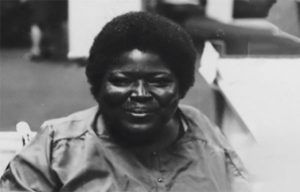Since 2010, and the passing of the UK’s Anti-Slavery Day Act, the 18th October has become an annual day of awareness-raising, and of reflection, on the continued plight of the millions of people who remain enslaved around the world today.
Globally, it is estimated that there are around 40 million people living in situations of ‘modern slavery’. An umbrella term, ‘modern slavery’ refers to situations of ‘exploitative labour that places one person in the control of another’.[1] This could include forced or bonded labour, human trafficking, descent-based slavery, child labour and forced or early marriage. Forced labour is by far the most prevalent form of modern slavery, accounting for approximately 60% of all cases around the world.[2]
Modern forms of slavery can be found in every country around the world, including in the UK.[3] Forced labour is the most common form of slavery here, and is believed to be fuelled by a demand for cheap products and services. Often this labour sees people trapped into working on farms, in construction, nail bars, hospitality, car washes, or in factories. In 2019, over 10,000 people were referred to the authorities as victims of modern slavery in the UK but the true number of how many people remain enslaved in this country is believed to be much higher.[4] In 2017, the Centre for Social Justice used a new data modelling technique to analyse crime reporting and intelligence records. Applying their findings across the whole country, they concluded that there is likely to be at least 100,000 victims of modern slavery in the UK.[5] The situation over the last two years with Coronavirus is likely to have exacerbated the problem.
In 2017 Lincolnshire Police secured the successful conviction of a family of 11 perpetrators, in the largest modern slavery trial in UK legal history.[6] The Rooney family had kept victims in squalid conditions and forced them to work for little or no pay. One had been trapped by them for 26 years. This conviction was the result of a large scale, county-wide operation which had begun in 2014. In 2019, Lincolnshire Police reported a sharp rise in the number of victims of modern slavery identified across the county. This had quadrupled, from 51 victims identified in 2018 to over 200 the following year.[7] Another noted reality of the situation in the county was that the widely-accepted myth that modern slavery was only affecting foreign nationals was not true – the third highest number of victims were people from the UK.
Modern slavery is often hidden in plain sight, and as such can be difficult to identify. Anti-slavery International, founded in 1839 as the oldest human rights organisation in the world, has identified a number of signs that might mean someone is enslaved.[8] They might:
- appear to be in the control of someone else and reluctant to interact with others
- not have personal identification on them
- have few personal belongings, wear the same clothes every day or wear unsuitable clothes for work
- not be able to move around freely
- be reluctant to talk to strangers or the authorities
- appear frightened, withdrawn, or show signs of physical or psychological abuse
- dropped off and collected for work always in the same way, especially at unusual times, i.e. very early or late at night.
If you’re worried about someone, having noted any of the above, then you can report your concerns directly with the Modern Slavery Helpline by calling 0800 121 700 or visit the Modern Slavery Helpline website where you can also complete a report online. Lincolnshire Police also recommend that you download the @UnseenUK app to find out more about the signs of modern slavery and how to report your concerns.
[1] Anti-Slavery International – FAQs
[2] Forced labour, modern slavery and human trafficking (Forced labour, modern slavery and human trafficking) (ilo.org)
[3] Modern slavery in the UK – Anti-Slavery International (antislavery.org)
[4] 2020 UK annual report on modern slavery (publishing.service.gov.uk)
[5] It still happens here: Fighting UK Slavery in the 2020s – The Centre for Social Justice
[6] Rooney traveller family jailed for modern slavery offences – BBC News
[7] Sharp rise in modern slavery across Lincolnshire | LincolnshireWorld
[8] Spot the signs of slavery and what to do – Anti-Slavery International (antislavery.org)
Thanks to Rebecca Craven who authored this blogpost.
